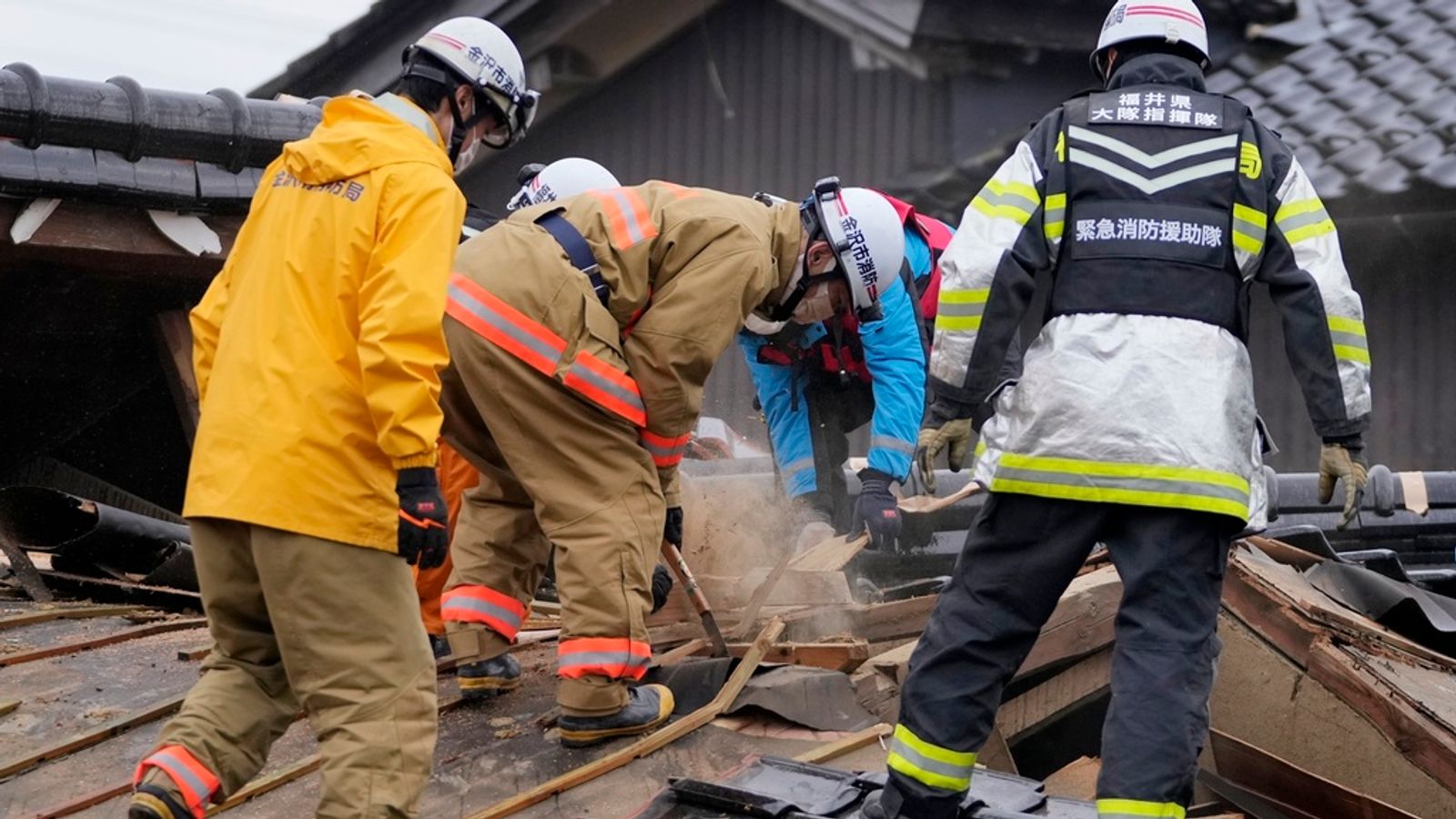Rescue teams in Japan face a “race against time” to find survivors after at least 62 people were killed following a 7.6-magnitude earthquake in the region.
Dozens of people are believed to still be trapped under collapsed buildings after Monday’s quake, which was followed by a 4.9 magnitude aftershock early on Wednesday.
According to Japanese authorities, 29 deaths were reported in Wajima city, 22 in Suzu and 11 were reported in nearby towns.
Two additional deaths were still awaiting official confirmation in Wajima.
The precise number of those trapped remains unknown, with military personnel, firefighters and canine units urgently sifting through rubble ahead of predicted cold temperatures and heavy rain.
The first 72 hours after an earthquake are especially critical, according to experts, and the prospects for survival greatly diminish after three days.
“More than 40 hours have passed. This is a race against time, and I feel that we are at a critical moment,” Prime Minister Fumio Kishida told reporters on Wednesday.
However, severed roads, damaged infrastructure, and the remote location of the peninsula is making it hard to reach some communities.
Read more on this story:
Japan earthquake as it happened
Videos show moments earthquakes hit Japan
Why is Japan at risk of earthquakes and tsunamis?
Heavy rainfall and cold temperatures forecast is leading to worries about landslides, which could further damage what is left of homes.
Officials also warned it is possible that even bigger quakes could hit the region.
Desperate calls for aid
More than 33,000 people have evacuated their homes and some areas remain without access to water, electricity or mobile phone signal, according to officials for Ishikawa prefecture.
Mayors of the hardest-hit cities – Suzu and Wajima – urged the government to clear roads and deliver aid swiftly.
“Even those who narrowly escaped death can’t survive without food and water,” Masuhiro Izumiya, the mayor of Suzu, a town of about 13,000 near the quake’s epicentre, said.
“We haven’t received a single loaf of bread.”
Shigeru Sakaguchi, the mayor of Wajima, said he was grateful for the government’s efforts but had received only 2,000 meals for some 10,000 evacuees so far.
Prime Minister Kishida said at a national disaster response meeting that the government opened a sea route to deliver aid to more remote areas.
The Chinese foreign ministry also said on Wednesday it was willing to provide any necessary help to the country.







